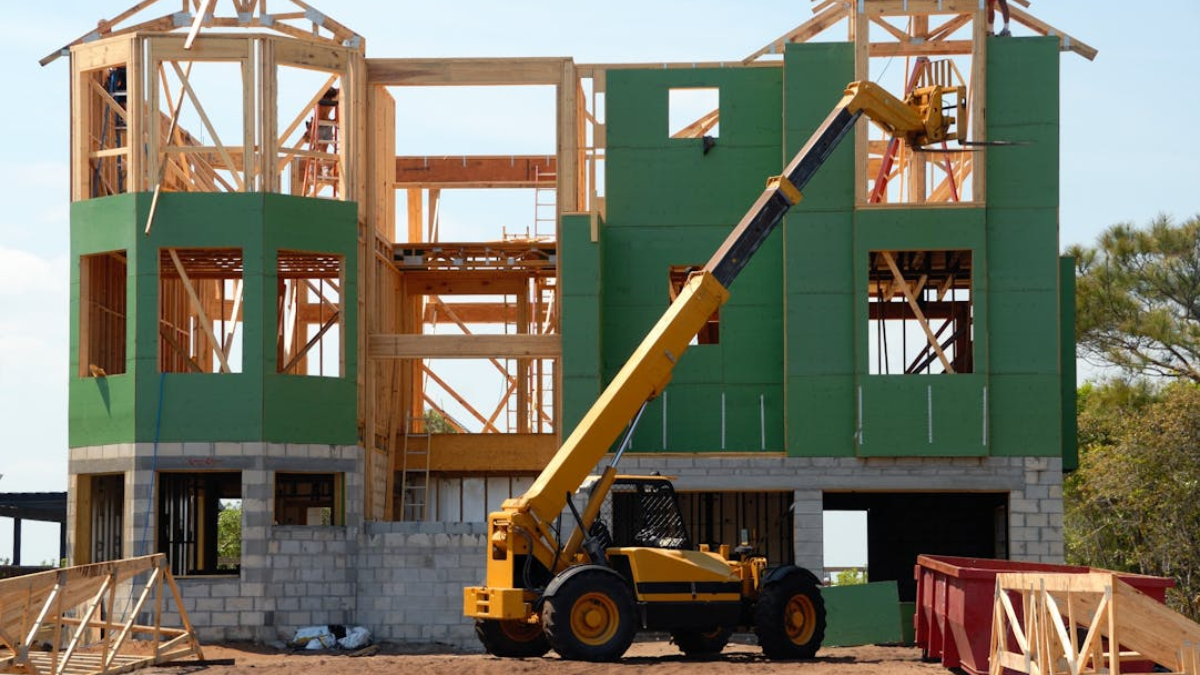Emergency loans provide a crucial financial solution for unexpected situations that require quick access to funds.
Whether it’s covering urgent medical expenses, repairing a broken-down car, or managing unexpected home repairs, these short-term loans can help bridge the gap between financial uncertainty and stability.
Loans
Comprehensive Guide to Home Improvement Loans in Australia
Home improvement loans have become increasingly popular among Australians looking to upgrade or renovate their homes.
You will continue on our website
In this article, we’ll explore how emergency loans work, the benefits and drawbacks, and provide a detailed guide on how to apply for them. By understanding these aspects, you’ll be better equipped to make an informed decision tailored to your specific financial needs.
What Are Emergency Loans?
Emergency loans are designed to provide quick access to funds in times of urgent financial need. These short-term loans are typically used to cover unexpected expenses such as medical bills, home repairs, car breakdowns, or other urgent situations where immediate cash is required.
Unlike traditional loans, emergency loans are intended to offer fast, flexible financing without the need for extensive documentation or a lengthy approval process. They are generally unsecured, meaning you won’t need to provide collateral to qualify.
With simplified application processes and rapid fund disbursement, emergency loans are an effective solution for managing urgent financial challenges.
How Do Emergency Loans Work?
Emergency loans provide a quick financial solution for unexpected expenses. These loans are designed to offer fast access to funds in times of urgent need, such as medical bills, car repairs, or other unforeseen emergencies.
Unlike traditional loans, emergency loans are typically unsecured, meaning no collateral is required. They are often processed quickly, with approval times ranging from 24 to 48 hours.
The loan amounts are generally smaller, ranging from a few hundred to a few thousand dollars, depending on the lender. Repayment terms are typically short-term, spanning anywhere from 3 to 24 months, making them ideal for managing immediate financial needs. Interest rates may be higher than those of conventional loans, reflecting the increased risk lenders take with these unsecured products.
Emergency loans can be applied for online, with many lenders offering a streamlined process that minimizes paperwork and provides fast decision-making. Whether you apply online or in-person, understanding how these loans work helps you manage your finances effectively during unforeseen situations.
Benefits and Drawbacks of Emergency Loans
Emergency loans provide a valuable solution for individuals facing urgent financial situations. While they offer quick access to funds, they come with both advantages and potential downsides. Understanding these can help borrowers make more informed decisions.
Benefits:
- Quick Access to Funds: Emergency loans are designed to provide rapid financial relief, often within 24 to 48 hours, allowing borrowers to address pressing needs swiftly.
- No Collateral Required: These loans are typically unsecured, meaning you do not need to put up assets like a house or car as collateral to qualify.
- Flexible Repayment Options: Most lenders offer flexible repayment terms that can be adjusted to fit different financial circumstances, helping borrowers manage their repayments comfortably.
- Minimal Documentation: The application process for emergency loans is streamlined, requiring fewer documents compared to traditional loans, making them more accessible in urgent situations.
Drawbacks:
- Higher Interest Rates: Due to the unsecured nature of emergency loans and the quick approval process, interest rates tend to be higher compared to traditional loans, which can increase the overall cost of borrowing.
- Short Repayment Periods: While flexibility is offered, the repayment periods are usually shorter, which may place a strain on finances if not managed properly.
- Risk of Over-Indebtedness: Borrowers may be tempted to take out multiple emergency loans, potentially leading to a cycle of debt if not carefully managed.
- Eligibility Requirements: While emergency loans are accessible to many, certain lenders may impose stricter eligibility criteria, such as income stability and credit score assessments.
Understanding both the benefits and drawbacks allows borrowers to weigh their options and make decisions that align with their financial goals and needs.
Requirements and Documents Needed
Before applying for an emergency loan, it’s important to understand the basic requirements and necessary documentation:
- Age: Must be at least 18 years old.
- Residency: Must be an Australian citizen or permanent resident.
- Income: Stable source of income to ensure repayment ability.
- Documents: ID, proof of income, recent bank statements, and utility bills may be required.
Top Lenders Offering Emergency Loans in Australia
When seeking an emergency loan in Australia, it’s important to choose a reputable lender that meets your financial needs. Several financial institutions offer emergency loans, each with unique features, interest rates, and repayment terms. Below, we explore some of the top lenders providing these services, helping you make an informed decision.
1. Nimble Loans
Overview: Nimble is a well-known lender offering quick, unsecured emergency loans with amounts ranging from $300 to $5,000.
- Interest Rate: 9.99% – 29.99% p.a.
- Repayment Term: Up to 24 months.
- Application Process: Simple, fully online process with fast approval times. Funds are typically deposited within 24 hours.
Nimble provides a user-friendly experience with minimal paperwork, making it a popular choice for borrowers seeking rapid access to funds.
2. MoneyMe
Overview: MoneyMe is a leading provider of personal loans, including emergency loans, ranging from $200 to $10,000.
- Interest Rate: 9.95% – 48.95% p.a.
- Repayment Term: Flexible from 3 to 24 months.
- Application Process: Completely online with instant approvals, making it ideal for urgent financial needs.
MoneyMe stands out for its competitive interest rates and a seamless online application process, ensuring quick financial support.
3. Harmoney
Overview: Harmoney offers personal loans tailored for emergency expenses, ranging from $2,000 to $70,000.
- Interest Rate: 5.99% – 29.99% p.a.
- Repayment Term: From 2 to 5 years.
- Application Process: Available both online and through the Harmoney app, with a simple application and fast processing.
Harmoney is recognized for its competitive rates and long-term repayment options, providing flexibility for larger emergency expenses.
Choosing the right lender depends on your specific financial situation and urgency. By comparing interest rates, repayment terms, and application processes, you can select the best option to suit your immediate financial needs.
How to Apply for Emergency Loans
Step-by-Step Guide
- Choose Your Lender: Research and select a lender based on your financial needs.
- Complete Online Application: Fill out the online form with necessary details (ID, income proof, etc.).
- Submit Documents: Provide required documents such as ID and proof of income.
- Approval: Lender reviews your application and provides a decision.
- Receive Funds: If approved, funds are typically deposited within 24-48 hours.
FAQs About Emergency Loans
What are emergency loans and how do they work in Australia?
Emergency loans are short-term financial solutions designed to provide quick access to funds for urgent expenses. These loans are typically unsecured, meaning no collateral is required, and can be used to cover unexpected costs such as medical bills, home repairs, or vehicle emergencies.
What is the application process for emergency loans?
The application process for emergency loans in Australia is straightforward and typically completed online. You’ll need to provide basic personal information, proof of identity, and documentation related to your income. Once submitted, most lenders provide quick approval within 24 to 48 hours.
What types of emergency loans are available?
There are various types of emergency loans, including personal loans, payday loans, and small cash advances. Each type offers different features in terms of loan amounts, repayment periods, and interest rates, catering to different financial needs.
Are there eligibility requirements for emergency loans?
Yes, there are eligibility requirements for emergency loans in Australia. Typically, applicants must be at least 18 years old, a citizen or permanent resident, and have a stable source of income. Additionally, some lenders may require a credit check.
How quickly can I receive an emergency loan in Australia?
In most cases, emergency loans are processed quickly, with funds being deposited into your bank account within 24 to 48 hours after approval.
What factors affect the loan approval time?
Several factors can impact the loan approval time, including the completeness of your application, the lender’s verification process, and whether all required documents are submitted promptly.
Can I get emergency loans on the weekend or outside business hours?
Yes, many lenders offer emergency loans on weekends and outside regular business hours. Online applications are available 24/7 for convenience.
What are the interest rates and fees associated with emergency loans?
Interest rates on emergency loans tend to be higher than traditional loans due to their short-term nature and unsecured status. Rates can vary between 5.99% and 48.95% p.a., depending on the lender.
How do interest rates compare with traditional loans?
Emergency loans typically have higher interest rates compared to traditional loans due to the increased risk for lenders. Traditional loans often come with lower rates and longer repayment periods.
Are there any hidden fees I should be aware of?
Some lenders may have hidden fees, such as establishment fees, early repayment penalties, or late payment fees. Always review the terms and conditions carefully before applying.
Can I get an emergency loan with a bad credit score?
Yes, it is possible to get an emergency loan with a bad credit score. However, borrowers with poor credit may face higher interest rates and less favorable loan terms.
What alternative options are available for people with poor credit?
For those with poor credit, alternative options include secured loans, co-signed loans, or credit-builder loans. These may provide more manageable terms compared to unsecured emergency loans.
How does a bad credit score impact the loan terms?
A bad credit score can lead to higher interest rates, shorter repayment periods, and stricter eligibility requirements. Some lenders may also require a guarantor or collateral to mitigate the risk.
What documentation is required to apply for an emergency loan?
Typically, the documentation required includes proof of identity (e.g., driver’s license), proof of income, recent bank statements, and sometimes utility bills for address verification.
Can I apply without providing proof of income?
Most lenders require proof of income to assess your ability to repay the loan. However, some lenders may offer loans to self-employed individuals or those with irregular income, but additional documentation may be required.
Are there any specific requirements for self-employed individuals?
Self-employed borrowers may need to provide additional documentation such as business financial statements, tax returns, and proof of stable income over a period of time.
What happens if I am unable to repay the emergency loan?
If you are unable to repay the emergency loan, it can result in late fees, damage to your credit score, and, in severe cases, legal action. It is important to communicate with your lender if you are facing difficulties.
What are the consequences of defaulting on an emergency loan?
Defaulting on an emergency loan can lead to financial penalties, debt collection, and legal consequences. Maintaining open communication with your lender is essential to avoid these outcomes.
Can I negotiate repayment terms or seek assistance if I’m struggling to repay?
Many lenders offer flexible repayment options or hardship assistance programs for borrowers struggling with repayments. Contacting your lender directly can often help in negotiating more manageable terms.
Are there government support programs for emergency loans in Australia?
Yes, there are government-backed emergency loan schemes available, such as the No Interest Loan Scheme (NILS) and StepUp Loans, which offer low-interest loans for essential items and services.
What other resources are available for financial assistance?
Additional resources include financial counseling services, community organizations, and nonprofit programs designed to assist with urgent financial needs.
How do I apply for government-backed emergency loan schemes?
To apply for government-backed emergency loan schemes, visit official government websites or contact community services that provide access to these programs.
Conclusion
Emergency loans serve as a valuable resource for managing unforeseen financial emergencies. By understanding the benefits, drawbacks, and application process, you can make an informed decision that suits your financial situation.
Loans
Zero Interest Loans: How They Work and Your Options in Australia
Zero interest loans are an excellent option for those seeking financial assistance without the burden of paying high interest rates.
You will continue on our website
For more information or to apply, always use the official channels provided by the lender.


